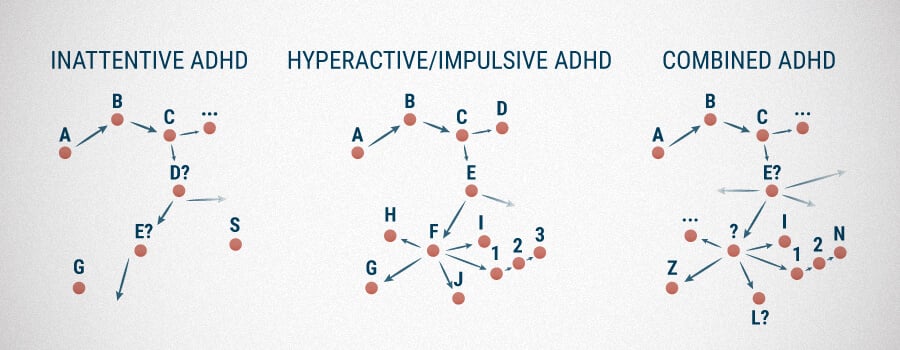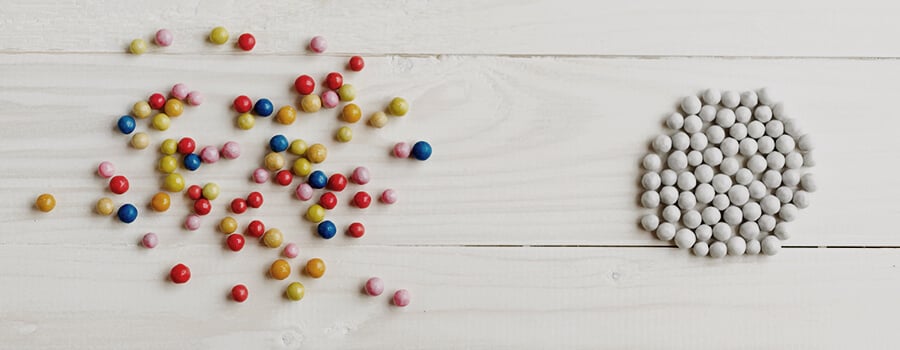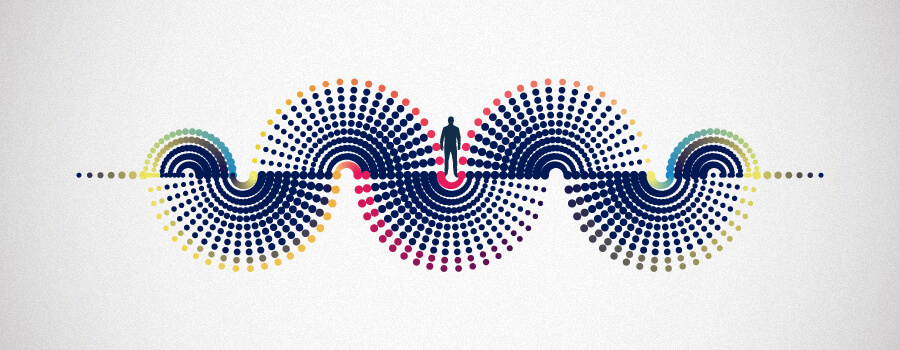.

Could Cannabis Be A Potential Treatment For ADHD & ADD?
Cannabis is emerging as a potential treatment for ADHD, a condition characterised by either hyperactivity, inattention, or both. Cannabis could be a potential treatment, as a dysfunction within the body's endocannabinoid system may be a root cause of attention deficit hyperactivity disorder.
Cannabis is well-known for its characteristic effect of chilling users out, plunging them into a state of relaxation and calm. When considering conditions such as ADHD and ADD, this state actually seems quite ideal for a person who is having trouble with rapid thoughts, lack of focus, and paying significant attention to the mundane but necessary daily tasks.
Cannabis is proving to assist with a wide scope of medical conditions, in large part due to certain compounds within the plant that interface with specific receptors in the human body that comprise the endocannabinoid system (ECS). Although further and more detailed research is required before any concrete conclusions can be made, it may be this internal system that plays an underlying role when it comes to ADHD and ADD.
Correct functioning of the cannabinoid receptors CB1 and CB2, along with adequate levels of endocannabinoids anandamide and 2-AG, may be required for proper cognitive function and performance. When this system is out of balance, symptoms of ADHD and ADD may start to arise.
WHAT ARE ADHD & ADD?
Attention deficit hyperactivity disorder, or ADHD, is a prevalent childhood condition that is estimated to affect over 6 million children within the United States. There are several variations of the disorder, and it can manifest in slightly different ways within different individuals. The condition is defined by lack of attention, drifting focus, difficulty concentrating, and disruptive behaviour. Adults can also be diagnosed with the condition, which may have gone unnoticed during their childhood years.
There is often some confusion revolving around the difference between ADHD and ADD. ADD was previously believed to be a different condition, defined by similar characteristics of ADHD, only without the hyperactive element. Recently, the symptoms that used to make up the diagnosis for ADD now present as ADHD after a reclassification.
TYPES OF ADHD
There are three types of ADHD, and they all revolve around lack of attention and hyperactivity. The first type is inattentive ADHD, a group of symptoms that would have been diagnosed as ADD in the past. This form of ADHD exhibits lack of attention without signs of hyperactivity.
The inattentive element of ADHD can be highly problematic for children and adults, and can negatively impact their social and educational/professional lives. Inattention is often defined by a person who is easily distracted, loses focus easily, is disorganized, finds it hard to follow instructions, and actively avoids tasks that require substantial mental effort. The individual in question may also ignore people when they are being directly spoken to.

The second form of ADHD is hyperactive/impulsive ADHD. This form of the condition features symptoms of hyperactivity and impulsiveness, but is devoid of the inattention that is definitive in the first form of the condition. Symptoms of this form of ADHD can present as excessive talking, conversational interruption, excessive fidgeting, and appearing to be always on-the-go and finding it hard and unpleasant to be at rest.
The third form of the condition is combined ADHD, which is when a person experiences the symptoms of inattention, hyperactivity, and impulsivity combined.
CAUSES OF ADHD
So, we’ve looked at some of the symptoms of this condition, but what exactly is the cause of it? Well, at this point in time, researchers in the field are still not entirely sure. ADHD is believed to have multiple origins, one of which is neurological. Some research suggests that decreased levels of the neurotransmitter dopamine could play a role.
Dopamine is responsible for transmitting signals between neurons and plays a role in movement, memory, behaviour and cognition, mood, learning, attention, and reward systems.
Another causal factor could be based in genetics and a structural difference within regions of the brain. Reduction in gray matter volume has been associated with individuals diagnosed with ADHD.
CONVENTIONAL TREATMENT
Before we get into what cannabis might be able to do for a person diagnosed with ADHD, let’s first take a look at what conventional treatments are utilised. Usual treatments consist of a combination of medications and behavioral therapy. The medications prescribed are either stimulants or non-stimulants.
Stimulants are used to boost the levels of dopamine and norepinephrine within the brain. Central nervous system stimulants such as Ritalin and Adderall are used to achieve this. Non-stimulants that achieve similar effects include Strattera and antidepressants such as nortriptyline.
Exercise, adequate sleep, and proper nutrition are also recommended to those diagnosed with ADHD as a way to manage symptoms. Mindfulness meditation, time in nature, and yoga may help to achieve similar results as well.

CANNABIS AS A POTENTIAL TREATMENT
Conventional treatments might not work for some people experiencing ADHD. Or even if they do, people might go looking elsewhere if they find the side effects to be undesirable. Some individuals might find great relief when attempting to self-medicate using cannabis. Anecdotal evidence suggests that using the herb may assist with reducing hyperactivity and impulsivity, which in turn may boost focus and decrease restlessness.
Anecdotal evidence isn’t the only type pointing towards cannabis as a potential treatment for ADHD. Several pieces of research and numerous doctors are also suggesting that compounds within cannabis may benefit the symptoms of ADHD.
A 2017 paper[1] published within the journal European Neuropsychopharmacology details a pilot randomised placebo-controlled experimental study that administered cannabinoid medication to 30 adults with ADHD. The authors of the paper state that the potential therapeutic effects of cannabis could be achieved via enhancing dopaminergic transmission, the same mechanism achieved by conventional medications.
The participants were split into two groups, one of which received an active treatment and the other of which received a placebo. The active group received doses of an oromucosal spray named Sativex. Each 100 microlitre spray of the product contains 2.7mg of THC and 2.5mg of CBD. The use of cannabinoids within this study were associated with significant improvement in hyperactivity and impulsivity, and a trend towards improvement in attentiveness in adults with ADHD.
The results from this study bolster anecdotal cases that display the effectiveness of self-medicating with cannabis to treat some of the symptoms associated with ADHD.
POSSIBLE ENDOCANNABINOID DEFICIENCY?
The study above shows that active constituents produced within the cannabis plant may help to alleviate the symptoms of ADHD. However, cannabinoids may play an even more fundamental role within the condition.
Dr. David Bearman of Santa Barbara, California elects to treat some of his ADHD patients with cannabis. Bearman believes that difficulty with focus and attention may stem from a patient experiencing what is known as a clinical endocannabinoid deficiency, meaning they are lacking adequate amounts of endocannabinoids that the body produces internally.
Interestingly, the endocannabinoid anandamide interacts with the same receptor site as the phytocannabinoid THC, meaning that ingestion of THC may help to boost the activation of this receptor, even with low levels of endogenous cannabinoids.
Dr. Bearman states that a person deficient in endocannabinoids who supplements with phytocannabinoids is likely to experience a reduction in the speed of neurotransmitter release, allowing the brain to focus with greater acuity.

POTENTIAL RISKS OF CANNABIS SELF-MEDICATION
Although cannabis may be a potential treatment for ADHD, its use needs to be considered on an individual basis. People experiencing ADHD are more likely to develop substance abuse disorders, and the use of cannabis raises the possibility of addiction and the use of other substances. This especially applies to teenagers, who are highly likely to start engaging in heavy cannabis use after experimenting with self-medicating.
Heavy cannabis use during teenage years may have serious adverse effects. The brain is still developing until around the age of 25, and significant cannabis use prior to this period has been associated with decreased performance during cognitive tasks and a thinner cortex—a brain region that controls memory and inhibition.
A WORD ON MICRODOSING
Some researchers state that microdosing may be the best route to take in terms of self-medication, especially for teens who are looking to experiment. A microdose is a tiny amount of cannabis—so small that the psychoactive effects are either not noticeable at all, or are very subtle. These small doses may help users to increase their focus, without taking a dose so large that it decreases productivity and functionality.
BE STRATEGIC WITH STRAINS
Those looking to self-medicate with cannabis should know that different strains can cause widely different psychoactive and therapeutic effects. Indica-dominant strains are associated with relaxation and more of a stoning body high. On the other hand, sativa-dominant strains are known to be more cerebral, energetic, and even motivating.
Strains also contain varying levels of cannabinoids. High-THC strains will result in much more of a psychoactive effect, whereas high-CBD strains are less so.
Different people will perhaps find certain strains more favorable for their condition. Sativa-dominant strains may serve to boost focus and attention, whereas indica-dominant varieties may help to calm down hyperactivity.
- Cannabinoids in attention-deficit/hyperactivity disorder: A randomised-controlled trial - ScienceDirect http://www.europeanneuropsychopharmacology.com









































